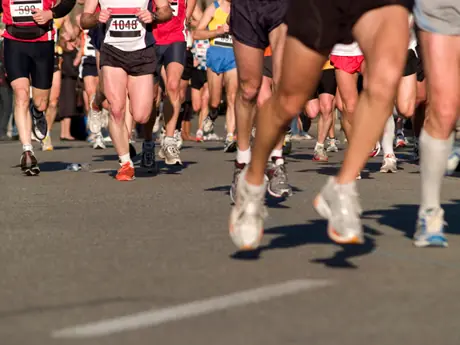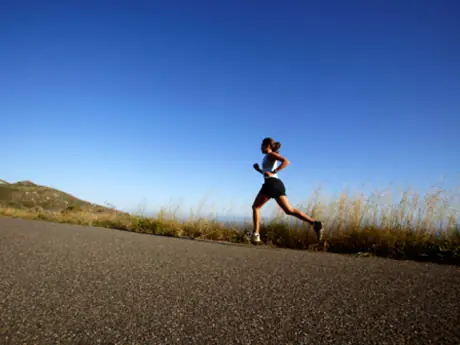Given the fact that the energy cost of running on a treadmill is slightly lower than the energy cost of running outdoors, at least at faster speeds, you might think that you could run a time trial of a given distance (say, 10K) slightly faster on a treadmill. But the opposite is true: runners are faster outside. This was demonstrated most recently in a 2014 study by researchers at the State University of Maringa in Brazil. Eighteen recreational runners were asked to perform one-hour time trials on a treadmill and on an outdoor track. On average, they covered 11.8K on the treadmill and 12.2K on the track. In other words, they performed 3.3 percent better outdoors. Yet their heart rates (an indirect marker of energy cost) were lower on the treadmill, indicating that outdoor running was "harder."
It may seem paradoxical that runners perform better in the "harder" outdoor environment, but there's a simple explanation: Running performance is not determined by how fast the heart is beating. Rather, it's determined by a runner's conscious perception of effort. In other words, it's not how hard your body is working that matters—it's how hard you feel you're working. And even though the body works harder when running outdoors than it does when running on a treadmill, running outside feels easier.
In the above study, the subjects reported equal ratings of perceived effort in both the indoor and outdoor 10K time trials. That's because their perception of effort determined how hard they ran. In both environments, perceived effort increased linearly throughout the run until it maxed out at the very end. This made the two efforts fundamentally equivalent even though pace and heart rate varied between the two.
More: Heart Rate Training Tips
Why is perceived effort higher, and performance consequently reduced, on the treadmill? Samuele Marcora, an exercise physiologist at the University of Kent who studies the relationship between perceived effort and endurance performance, says that running outdoors...
1. Produces more airflow against the body
2. Involves a visual perception of movement that is lacking indoors, and
3. Promotes more dissociative thinking through greater overall visual stimulation
All of these factors have been shown to reduce perceived effort.
Another possible factor is the greater sense of freedom of movement outdoors, particularly freedom to make tiny stride-to-stride adjustments. While it's possible to adjust the speed of most treadmills in 0.1 mile-per-hour increments, outdoor running entails much subtler and more frequent adjustments that are made subconsciously, giving the runner a greater sense of freedom that feels more pleasant. According to Marcora, "There is a well-known motivation theory called self-determination theory, which shows that giving people more autonomy improves their mood and motivation. So the psychological effects of autonomy may affect perceived effort."
- 2
- of
- 3
About the Author

Get ACTIVE on the Go


Couch to 5K®
The best way to get new runners off the couch and across the finish line of their first 5K.
Available for iOS | Android







Discuss This Article